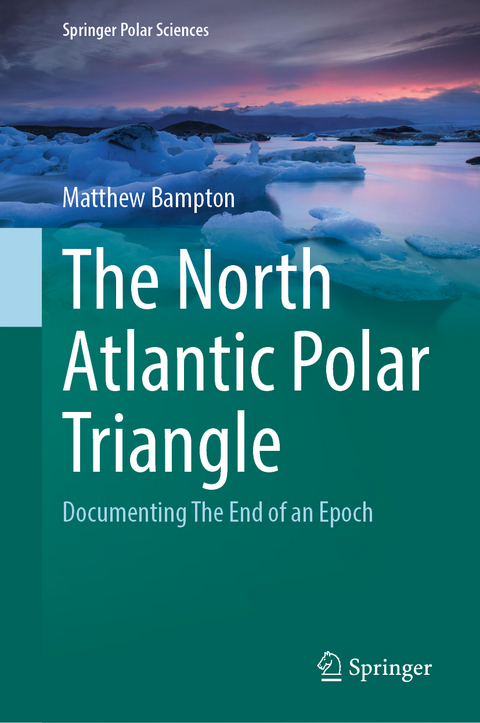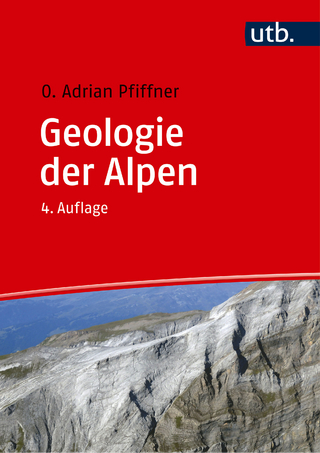
The North Atlantic Polar Triangle
Springer International Publishing (Verlag)
978-3-031-27263-9 (ISBN)
This book explores the broad trajectory of the Holocene epoch in a region defined as the North Atlantic Polar Triangle (NAPT). The text is multi-disciplinary and synthetic, and focuses on the area extending from the North Pole to the Equator, and covers 60 degrees of longitude, encompassing the entire North Atlantic and significant parts of the land-masses that surround it. It discusses the physical, ecological and cultural history of the NAPT and its bordering regions after the end of the Last Glacial Maximum. It outlines the long-term changing relationships between environmental processes and humans within this single space, providing insight into the broader and more complex interactions happening globally. The author proposes, on the basis of the changes that can be documented in the NAPT, probable trajectories of change in other equally complex but less well-documented, and less geographically constrained Earth systems. It contributes to the ongoing discussion of human transformation of the world, and the current debate about the designation of a new geological epoch, the Anthropocene. It concludes by supporting the proposition that the Anthropocene is best understood as a boundary event, marking the upper limit of the Holocene, rather than as a new epoch. The intended audience includes physical geographers, anthropologists and readers exploring the synthetic analyses of the crisis humans currently confront as the world enters a period of extraordinary change
Dr. Matthew Bampton is a Professor of Physical Geography at the University of Southern Maine. Matthew’s current research focuses on climate impacts on marginal communities in the sub-arctic during the Little Ice Age. Since 2011 he has been working on an interdisciplinary field project in the Shetland Islands combining archeology, geology and GIS to analyze the destruction of a farming community. His other research interests include GIS education for undergraduates, and developing models for geospatial technology education in a rural region. This work is a collaborative effort, and involves faculty from all seven UMaine System campuses. For over a decade he worked on a long-term NSF Research Experience for Undergraduates Program with Mark Swanson of USM’s Geosciences program. In the past he has studied human impacts on northern New England landscapes during the Colonial period, he has worked with archaeologists from the Thor Heyerdahl museum mapping Moai on Rapa Nui (Easter Island), and he has collaborated with USM Archaeologist to map Native American sites in coastal Maine. Other collaborations include analyzing human rights crises and massacres in Guatemala, seal strandings in the Gulf of Maine, and the geography of obesity.
Chapter1. Magnitude, Frequency, and Change in Earth Systems.- Chapter2. Before the Holocene.- Chapter3. The Greenlandian.- Chapter4. The Northgrippian.- Chapter5. The Meghalayan.- Chapter6. The Anthropogenic Boundary Event.
| Erscheinungsdatum | 05.07.2023 |
|---|---|
| Reihe/Serie | Springer Polar Sciences |
| Zusatzinfo | XV, 134 p. 22 illus., 18 illus. in color. |
| Verlagsort | Cham |
| Sprache | englisch |
| Maße | 155 x 235 mm |
| Gewicht | 385 g |
| Themenwelt | Naturwissenschaften ► Geowissenschaften ► Geografie / Kartografie |
| Naturwissenschaften ► Geowissenschaften ► Geologie | |
| Schlagworte | Anthropocene • geomorphology • Glacial regression • Historical Geography • Holocene • Ice Age • Ocean Circulation |
| ISBN-10 | 3-031-27263-3 / 3031272633 |
| ISBN-13 | 978-3-031-27263-9 / 9783031272639 |
| Zustand | Neuware |
| Informationen gemäß Produktsicherheitsverordnung (GPSR) | |
| Haben Sie eine Frage zum Produkt? |
aus dem Bereich


